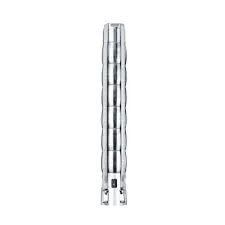A well pump is a vital piece of equipment typically used to extract water from the ground in homes, farms, and other establishments that rely on well water. If your Laurel, DE home or business uses a well to obtain fresh water, it’s essential to understand how a well pump works to maintain and troubleshoot it properly.
Let us know right away if you need water well repairs and read on as we discuss how a well pump works and the different types of well pumps.

How a Well Pump Works
In simple terms, a well pump is a mechanical device that transports water from the ground to the surface; this water is then used for everyday purposes like washing hands, bathing, and cooking. The pump itself operates by creating a vacuum that sucks water up through a pipe and into the storage tank or pressure tank.
A well pump consists of two main components: the motor and the pump itself. The motor is primarily responsible for providing the power to drive the pump, while the pump is responsible for drawing water from the well and sending it to the storage tank or pressure tank. What’s important to understand is that the pump is not above ground — it is instead submerged deep inside the well, where it can access the water source.
Depending on the type of water well your property uses, you may have one of two pump types: submersible or jet.
Submersible Pumps
Submersible pumps are the most common type of well pump and are commonly used in deep wells. They are designed to be submerged in water, typically several hundred feet below the surface, and tend to be more efficient and quieter than jet pumps.
A submersible pump consists of a motor, pump, and control box. The motor is hermetically sealed and waterproof and is installed at the very bottom of the well. The pump is then connected to the motor and sends water up to the storage tank or pressure tank. The control box is installed on the surface and is used to regulate the pump’s operation.
200QJ Deep Well Submersible Pump
Jet Pumps
Jet pumps, on the other hand, are commonly used in shallow wells, typically up to 25 feet deep. They operate by creating a vacuum that draws water up through a pipe and into the pump, where it is sent to the storage tank or pressure tank.
A jet pump consists of a motor, pump, and injector. The motor is located on the surface and drives the pump, which is installed in the well, and the injector is located above the well and creates the vacuum that draws water up.

Maintaining a Well Pump
To achieve efficient operation of a well pump, it’s important to keep up with water well maintenance.
One of the most important maintenance tasks is checking the pressure tank regularly. As mentioned above, the pressure tank stores water and maintains the water pressure in the system. If the pressure tank is not functioning correctly, it can cause the pump to work harder, leading to premature failure. If your pump reaches this point, it’s time to contact our water well company in Laurel.
Another important maintenance task is replacing the well pump’s filters regularly. Dirt, sand, and other debris can build up in the pump, reducing its efficiency and potentially causing damage. Filters should be checked and replaced every few months by a water well maintenance expert.

Troubleshooting Well Pump Problems
Even with proper maintenance, well pumps can sometimes experience problems. If you experience any of the following issues, contact our water well repair experts for help:
- Low water pressure: Low water pressure can be caused by a clogged filter, a malfunctioning pressure switch, or a failing pump.
- No water: No water in the pressure tank can be caused by a power outage, a tripped circuit breaker, a faulty pressure switch, or a failing pump.
- Strange noises: Strange noises can be caused by a failing motor, loose or worn parts, or air in the system.




